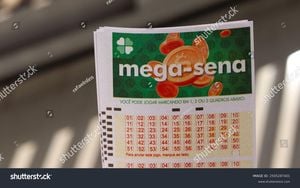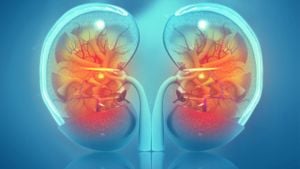CSL Limited, the biotech giant known for its production of plasma-derived therapies and vaccines, recently announced its half-year results for fiscal year 2025, showing both positive growth and notable challenges, particularly within its immunization segment.
The company's financial report revealed a 5% increase in total revenue, reaching US$8.48 billion, and a 7% rise in net profit after tax (NPAT) to US$2.04 billion, both figures adjusted for constant currency. These results, driven largely by the success of the CSL Behring division, met several internal expectations but fell short of market forecasts, which had predicted higher figures across these metrics.
On the broader Australian Securities Exchange (ASX), CSL's share price experienced turbulence following the announcement, reflecting the mixed reception of its results among investors. The company's market value fell as concerns over its Seqirus division—responsible for vaccines—came to light, stemming from significantly low immunization rates, especially within the United States.
Despite this setback, the CSL Behring business segment demonstrated strong sales performance, reporting revenue growth of 10% to US$5.74 billion. This surge was attributed to rising demand for key products, particularly immunoglobulins, which saw sales increase by 15% to US$3.17 billion. Other areas of growth included Albumin, experiencing a boost of 9% to US$672 million, and Haemophilia products, which were up 11% to US$731 million.
The disappointing performance of the Seqirus unit, where sales decreased by 9% to US$1.66 billion, overshadowed the strengths of CSL Behring. Analysts have pointed out several external factors contributing to Seqirus's decline, including vaccine fatigue post-pandemic and political dynamics, with some speculating this impacted the healthcare environment, especially with the emergence of Robert F. Kennedy Jr., known for his vaccine skepticism, as a key figure potentially influencing health policy.
CSL's leadership tried to maintain momentum with reassuring outlook statements. Dr. Paul McKenzie, CEO and Managing Director, noted, "CSL delivered a solid result for the first half of the 2025 financial year led by CSL Behring. Strong demand for many of our market-leading therapies has translated to sales growth, particularly within our core immunoglobulin franchise."
Despite these challenges, the company showed confidence moving forward, reaffirming its guidance for FY25 with revenue growth anticipated to be between 5% to 7%. CSL's NPATA is also expected to reach between US$3.2 billion and US$3.3 billion, reflecting growth of about 10% to 13% year-over-year. McKenzie emphasized, "The fundamentals of CSL's business units are solid, and we are well-positioned for annualized double-digit earnings growth over the medium term."
These forecasts come amid continued investment in operational efficiency and technology, including the rollout of innovative RIKA plasmapheresis devices aimed at reducing costs associated with plasma collection. This move is expected to optimize production capabilities by June 2025.
Despite the optimism, the market's reaction reveals mixed sentiments. Analysts highlighted the need for cautious optimism, with Goldman Sachs providing insight on the results, stating: "Mixed result with headline misses to group revenue and NPATA, primarily driven by Seqirus weaknesses and increased group costs." The report also pointed toward CSL's efforts to recover margin growth through strategic operational improvements.
The share price movements post-announcement have led to speculation about future investor strategies. While there remains solid confidence from some brokers who maintain 'buy' ratings on CSL, others urge caution, particularly relating to Seqirus's underperformance and increasing competition within the biotech sphere. Industry shifts and potential new market entrants are also under scrutiny, with some analysts advising investors to maintain cautious stances until clearer forecasts can be presented.
CSL's interim dividend was increased by 16% to US$1.30 per share, equivalent to approximately A$2.08, which came as welcome news for shareholders, though some financial institutions had projected higher returns. The disparity between actual results and analysts' expectations has led to broader discussions on the valuation and future growth prospects of the company.
Going forward, as CSL navigates the challenges presented by Seqirus's sales decline and strives to capitalize on the strengths of its Behring division, market observers will undoubtedly be watching its movements closely. The decisions made in the second half of FY25 will be pivotal as the company seeks to restore investor confidence and assert its market position amid growing competition.
Overall, CSL's half-year results showcase the complexity of the biotech industry, where growth can be uneven, and external factors play significant roles. The future may hold brighter prospects for CSL, but its recent performance highlights the volatility and challenges inherent within the healthcare sector.



